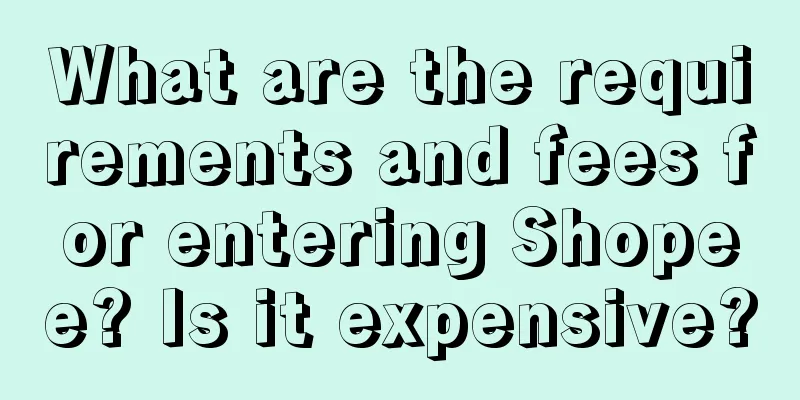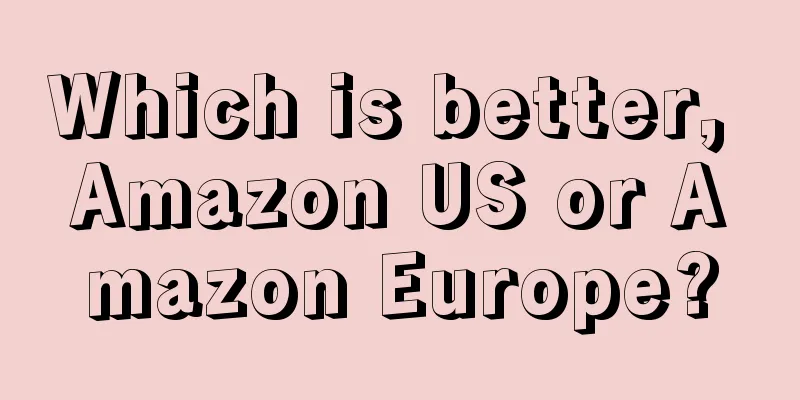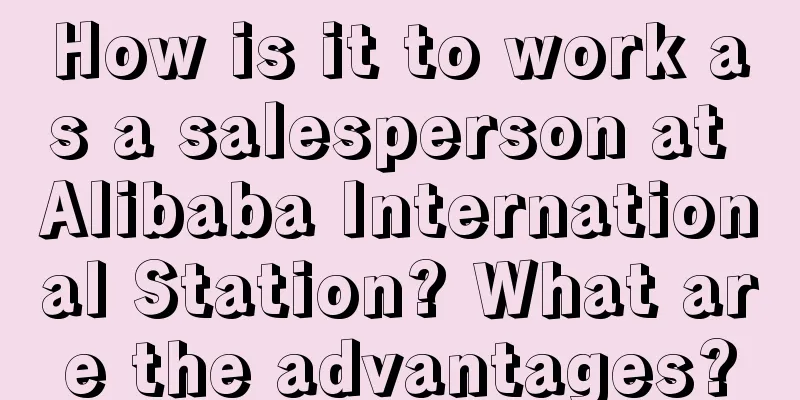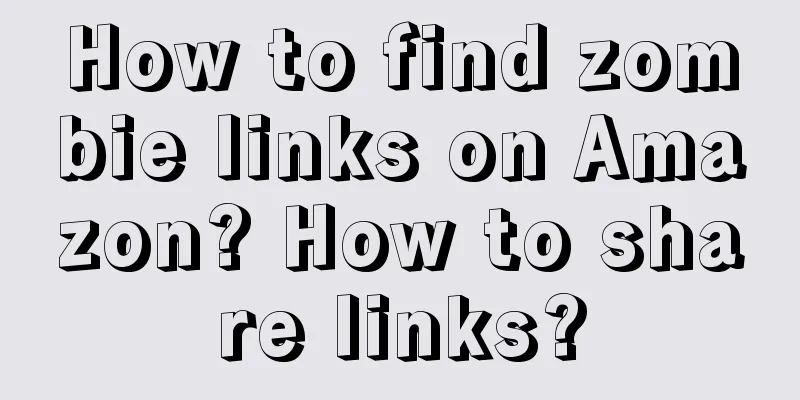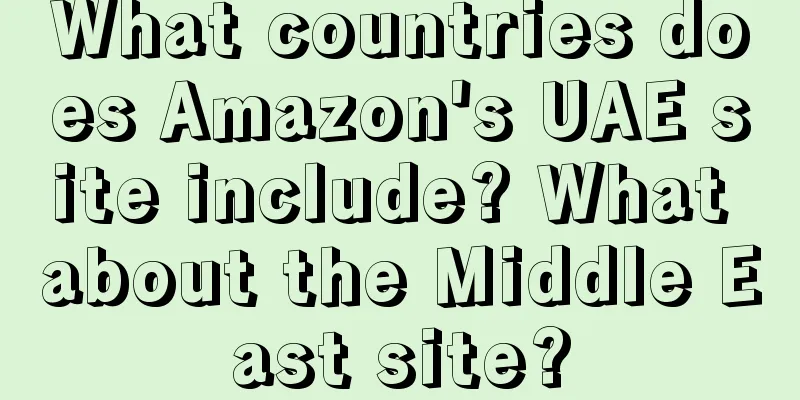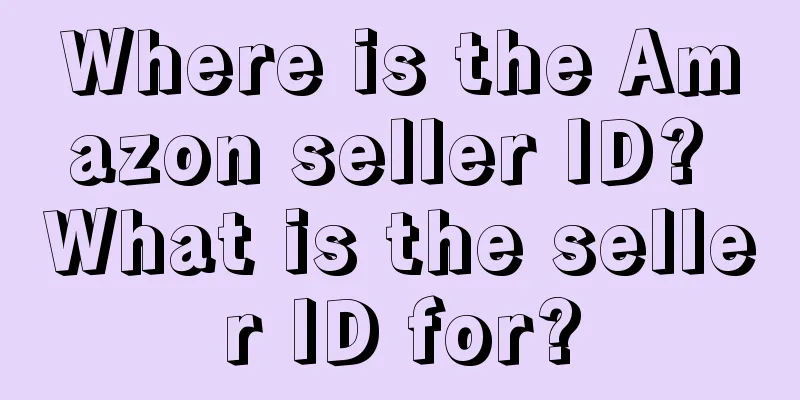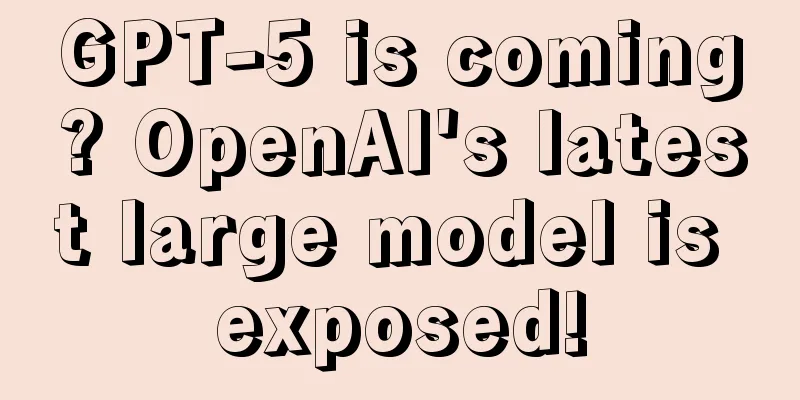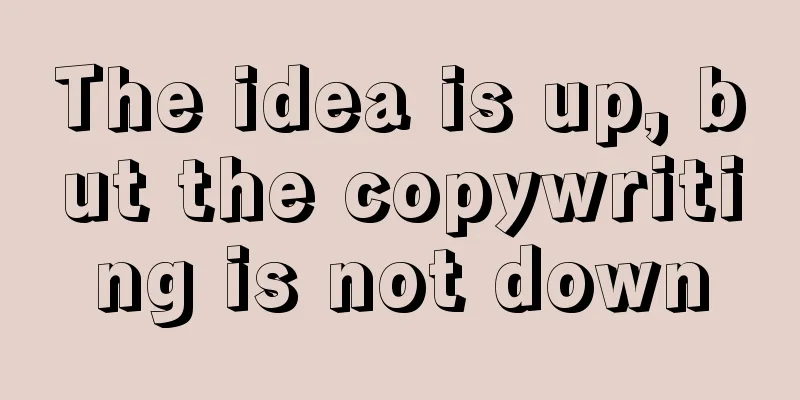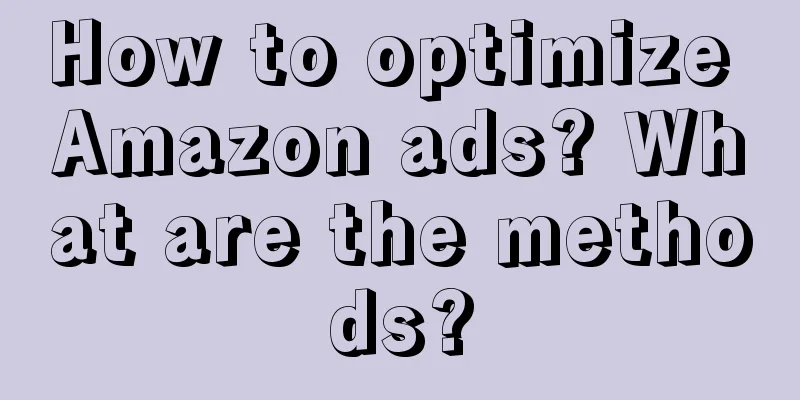Content is advertising
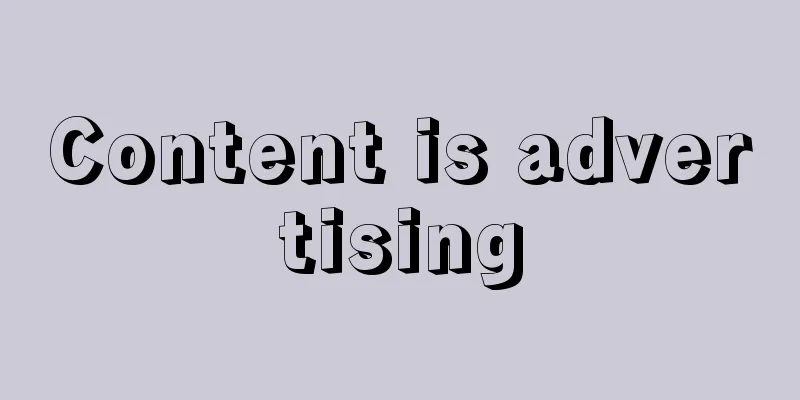
Let me ask a question first: Suppose you are a boss or a marketing manager and are running a campaign; do you think that after signing a star, you should do advertising or content dissemination? Not surprisingly, there are two results:
Okay, let me ask you another question: Do you think advertising is more important or content is more important? This shouldn't be a one-sided situation. You would say that each has its advantages, depending on how it is used. Although this is the theory, when making decisions, you will still fall into the vicious circle of the above cycle. This was the crux of the conflict between a person in charge and the boss a few days ago. So, in the economic downturn, when users are increasingly concerned about cheapness and price comparison, should we create content or advertisements? Let’s change our perspective and find a solution. 1. Changes in media have fundamentally changed advertising itself and its content format, because content follows the media to a large extent.Maybe it’s a bit hard to understand? Let me expand: First of all, in the era of traditional advertising, television and outdoor are the most mainstream forms. Television advertising is a typical strong media advertising with great media influence. The advertising content itself may not be that strong. This type of advertising relies on prime time on television and repeated broadcasts, and uses highly strategic copywriting to allow the brand to be quickly accepted by consumers. For example: I will not accept any gifts this year, and the only gift I will accept is Melatonin. Here, McLuhan's famous saying "the medium is the message" is reflected. One of the characteristics of TV advertising is that it is expensive and short, so the creative team has to design advertising words and pictures that are attractive and can quickly convey information. Outdoor advertising, however, has a fixed display location, so although each person only watches it for a short time, repeated display can effectively attract the attention of some consumers. So, what changes have taken place in advertising since we entered the Internet age? Initially, Internet advertising tried to imitate traditional media forms by putting banners, pop-ups, and streamers on web pages, where one click would lead to a specific topic or brand purchase page. However, it was soon discovered that this method was not very effective. Because the Internet media has low intervention and is easily overlooked by the public, content platforms have to change their tactics and use the power of content to attract attention. for example: They will use some funny jokes or titles to attract you to click (such as: "The boy secretly hid in the bathroom, but he didn't expect..."). You click it and find it's an advertisement, but the content is interesting, so many people will still choose to share it. Advertisements that attract people with humor and fun, revealing brand information in the middle or at the end of the video. This method is more natural and does not make people feel forced to sell. In fact, it is also a preliminary form of social marketing. Later, it also had an industry name of Social. What new changes happened later? Pictures, texts and short videos became popular, and advertising content also changed. People no longer liked or wanted to see content about a product or its effects labeled on a picture. Instead, they began to focus on emotional value and visual aesthetic value. What to do? Planting grass has become the mainstream language, using planting grass to influence the minds of potential buyers. And all of this, from the early days of the Internet to the present, can be described in one word, that is, attention. With attention, you have probably won half of the spread. Therefore, with the development of Internet media, there has been a major transformation from media-driven to content-driven. More and more companies are beginning to pay attention to content creation and no longer just regard content as an advertising tool. In this process, content is not only a means to attract consumers, but also becomes a bridge for communication between brands and consumers. Now, many B-side companies have realized in advance that high-quality content is slowly becoming the strongest advertisement. That is, the media has fundamentally changed the form of advertising and content. 2. Seeing this, you may wonder, what is the difference between advertising and content?Let’s look at a few examples: For elderly people’s shoes, wear Zulijian; to remove dandruff, use Head & Shoulders; Omo automatic laundry detergent has special functions that can help you remove oil stains and dirt. As you may have noticed, there are three types:
But no matter what, these advertisements are a bit like the loudspeaker at the entrance of the village, paying special attention to the output of values, telling you loudly what is good about me and you must understand it. The advantage is that it can quickly give users a preliminary impression, but the disadvantages are also obvious. It is okay to listen to it occasionally, but if you listen to it every day, users may feel like they are being abused at home and are being indoctrinated with moral principles every day. Therefore, advertisements should not appear every day on the Internet. After all, consumers prefer to find a companion with whom they can communicate, complain, and even rely on at any time. This kind of interaction is much more useful than simply receiving values, and it can also make people feel the meaning of their existence. This is one of the reasons why brands that are closer to users, pay more attention to inner emotions, and have a more low-key attitude are more popular. Now that we have mentioned content, what exactly is content? Does advertising count as content? Of course it does. When doing marketing, advertising information is very direct, while content is more like surround speakers, delivering more comprehensive and in-depth information. For example: You see a poster. It says: "On July 20, the movie starring Shen Teng and Ma Li is released, come and see it!" This is an advertisement, straightforward and clear, the purpose is to get you to go to the cinema. If it's content, the situation is a little different. When you see an article or a video online, it not only tells you when a movie will be released, but also gives a detailed introduction to the movie's background, how the director selected the actors, what challenges the director encountered during the filming process, what kind of people the characters in the movie are, and so on. This is the content. The purpose of the content is not only to make you watch the movie, but also to let you understand all aspects of the movie through detailed introduction, so as to increase your interest and expectations. Therefore, content is like surround speakers, surrounding you from multiple dimensions and giving you a three-dimensional experience. So, what are the advantages of content? Sorry, I can't sum it up in one sentence yet. Because when we talk about the difference between advertising and content marketing, we cannot separate it from the "business framework" behind it, that is, where and on which platform we want to find what kind of people. In traditional television and print advertising, the target audience is relatively broad and they are not able to precisely target a specific group of people, so advertising is more used to build brand awareness. But the situation is different on the Internet. In the omni-channel marketing of each platform, users are segmented more specifically. Not only are users divided according to basic gender, hobbies, and tags, but each user can also become a "content creator." The content generated by users is classified and fed back to brand owners, so that brands can distinguish different consumer groups from a more detailed perspective, such as targeting precise groups, groups that need to be targeted, and general groups. Obviously, this segmentation helps marketers to communicate more effectively. Therefore, a major advantage of content marketing is that it can make every piece of content closely related to consumers; in other words: the content produced by KOC and KOL can touch the specific needs and emotions of consumers and achieve real resonance. You need to find a platform and crowd that suits your brand to penetrate. Seeing this, you might say: First, offline advertising makes the brand information clear all at once and directly occupies the user's mind; second, creating content online is like sowing seeds, which slowly penetrates into the user's mind. It’s so accurate, but the problem is: everyone is thinking, how can one cent be used as two dollars? With a limited budget, who has the energy to do segmentation? Is it possible to make advertising like content? In other words, the content is spread too detailed and obviously not as fast as advertising. Can we combine the two to make it spread faster? 3. Don’t be too advanced and spread other people’s words.You must have heard of the word "spread", which means: reversing the word "dissemination". It does not mean that I push something to others, but that I push things to others and they can spread it in a self-circulating manner. For example: if you feel tired and sleepy, drink Red Bull; if you are afraid of getting a sore throat, drink Wanglaoji. You will immediately want a lot of catchy slogans, no doubt, but there are two aspects of these slogans that are different and forgotten:
First, when looking for an advertising company to cooperate with, the cost per thousand is usually mentioned, which is similar to how much it would cost if a thousand people saw a certain copy. If you think the ROI matches, then invest; if it’s expensive, then wait and see. From a marketing perspective, it is slightly different. Assuming the total cost of letting 1,000 people see the content is 50 yuan, then it is important to determine the percentage of people who are influenced by this 50 yuan and can tell others about the content again. Because, spread means I push it to you, and broadcast means "self-fission". As the saying goes, one person spreads it to ten, ten spread it to a hundred, and a hundred spreads it to a thousand, which represents the transmission rate. To put it simply, the communication rate is the ability of a piece of information to self-propagate and diffuse among receivers after it is transmitted from the source. In other words, if I spend 10 dollars to tell you who I know, and you know the news and tell more people, the higher this ratio is, the higher the content communication rate is. In the first half of the year, I reviewed many marketing cases and found that many of the reasons for failure were because the copywriting was too similar to written language and not colloquial enough. for example: At the beginning of the year, Bawang Tea Girl held an event called "Dragon Year Friendship Cup". Their copywriting was "Stars and stars, year after year", which sounds quite literary, but not down-to-earth. If I don't mention it now, you will definitely not think of it. The slogan of the Mo Yogurt ad is "With dragons, magic happens", which is also hard to understand at once. A few days ago, I saw an ad on Douyin that said: "Success comes naturally with hard work". I almost didn't recognize that it was advertising a skin care product. Ferdinand de Saussure is one of the founders of modern linguistics. In his book General Linguistics, he divides language into two parts: langue and parole. Lang refers to the rules and conventions of language, which are followed by everyone and are like a framework that tells us how we should speak; while Talk refers to the way each of us speaks in our daily lives, which is specific and related to the environment we are in. So, when communicating, should we use Lang or Tan? Perhaps “talking” is easier for people to accept. Because every time a brand is communicated, if it uses the way people talk in daily life, the listeners can understand what the content is trying to say, and the information transmission is very clear. Another point is that writing is just a rule, not real speaking. When we chat, we don’t always use written language, because communication is to be heard, and we speak to be understood by others. Think about it again, when we read text or watch videos, don’t we also prefer to use simple words to understand those official and complex words? This is the benefit of talking (parole). Seeing this, you will definitely think that when doing large-scale campaigns in the second half of the year, you must make good use of "talking", refine the theme of the event into a few words that everyone likes to hear, and help them spread the word. Wait, is it really enough to just speak human language? I don’t think it’s enough. 4. Shift from theme thinking to communication point thinking.What's the meaning? A few days ago, an advertisement for a taxi-hailing app was placed in the subway. The copy was a lot of text, which went like this: Don't get too carried away with work, sit down and relax; you can also walk uphill while sitting down; sit down and throw the stress to the seat; sit steadily so that your emotions can be stable. Obviously, the brand wants to convey their message through the action of "sitting", and it says a lot. But in my opinion, such a strategy is no longer likely to cause people to spread the word themselves or bring about product sales conversion. Why? The way to do advertising theming is this: once the project leader gets the task, he or she will first analyze the data and then decide on a theme. After deciding on this big theme, other content will be refined around it. But the problem is that it is easy to go off topic when setting a theme, because the traditional theme itself is a packaged and overly conceptual thing that is difficult to be specific and practical. When we start to conceive content with thematic thinking, we tend to be confined to the old model and imitate the previous theme, thus ignoring the possibility of free thinking. Therefore, using conceptual themes will cause other content to deviate from actual needs. Therefore, thematic thinking will trap you in the theme. What is communication point thinking? Enter the real scene, start from the actual problem, and determine the core message you want to convey. The core message here is not a theme set by humans. The communication point thinking requires finding the problem first. For example, if a brand has a new product to launch, the core goal should be to increase the product's popularity and recognition. After determining the problem to be solved, the next step is to design content around this core communication point. This means that whether it is the title, picture, or other media materials, it should directly and clearly convey the information related to the new product problem. In addition, the communication point thinking also emphasizes placing the core information in the most conspicuous position of the content, and constantly emphasizing it through different channels and groups of people. Whether it is print advertising, video or H5, the core information must be clearly displayed and repeatedly conveyed. I won’t give you many examples here. Just remember one key point: the title of the advertising campaign should directly use the name of the new product + the brand name + other easy-to-remember, catchy information that people want to broadcast. Therefore, when creating advertisements, pay less attention to the "theme" and more attention to how to solve practical problems, that is, focus on the communication point. After reading about the changes in media, the difference between advertising and content, how to spread people's words, and abandoning thematic thinking and turning to communication point thinking, what do you think of large-scale campaigns, whether to focus on content or advertising? In fact, advertisements can be content, and content can also become advertisements. It is important whether content and advertisements can be spread by people. Just like the saying that all the post-00s know: If an official does not serve the people, it is better to… 5. ConclusionContent is the best advertisement. Design a sentence and let the customer listen to it. After listening, he wants to tell his neighbor Wang, then you have succeeded. Think about it, right? Author: Wang Zhiyuan Source public account: Wang Zhiyuan (ID: 878436) |
<<: Why can Xiaohongshu buyers have low followers and high GMV?
>>: How to fine-tune the layout of Xiaohongshu keywords
Recommend
Where can I apply for a cargo transportation conditions certificate? How long is it valid?
In foreign trade, if the goods are to be transport...
Double 12 promotion, mini program mall improves private domain conversion operation skills
How can Double 12 follow Double 11 to create a mor...
How to attract traffic to a new Shopee store? What are the methods?
Shopee is a relatively well-developed cross-border...
How to chat with users?
The relationship between people and brands is a lo...
Why are Amazon variants automatically split? What should I pay attention to when opening a store on Amazon?
Amazon is a popular cross-border e-commerce platfo...
Are there any requirements for Amazon brand sellers? What are the characteristics?
On Amazon, if you want to open a store, you usuall...
How often are Amazon account ratings updated? Why do Amazon rankings drop?
For Amazon merchants, there are many things that n...
This couple blogger doesn't follow the usual path. @派小轩's extremely awkward relationship is actually a little sweet
The word "awkward" runs through @派小轩'...
WeChat tightens commercial cooperation with public accounts, not to collect "tolls"
This article analyzes the evolution and commercial...
What are the advantages of Amazon Australia? Is it easy to do business?
There are many merchants who want to know about Am...
Why are Amazon orders always cancelled? How to increase order volume?
As Internet shopping becomes more and more popular...
How to check if the funds in your account are frozen on Amazon?
If Amazon sellers have account association, sell b...
Seven keys to brand success
What are the key elements for a brand to succeed, ...
College students are addicted to making money in their dorms: earning over 10,000 yuan a month, working all night to place orders
Before leaving school, some college students have ...
How to check the traffic of Amazon store? How to check it?
If you are running an Amazon store, you are actual...
